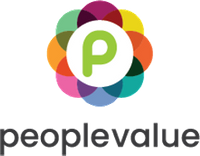How to use reward and recognition to give business insight

Before it’s even rolled out to your employees, your reward and recognition scheme should have a key purpose or set of goals. Maybe you want to embed your corporate values into company culture, or perhaps you want to strengthen your EVP to become an employer of choice in your market. You may simply want to drive employee engagement across your business using reward and recognition. Whatever you want to achieve, you can measure the success of your scheme by looking at management information from your reward and recognition platform.
But, while it’s tempting to focus only on your Key Performance Indicators (KPIs), data from your reward and recognition scheme can also provide other useful business information too. In fact, it can be used as a powerful and discrete management tool to deliver key business insights across a wide range of areas.
Let us tell you why.
Assess your scheme’s performance
Your reward and recognition scheme’s performance is the first and arguably most important insight you can get from management information. But what is good performance? To get the right information at the reporting stage, scheme success needs to be defined and quantified by selecting KPIs. Then, by matching your reports to your KPIs, you will easily be able to measure your ROI.
Reward and recognition providers should deliver detailed management information to their clients, which is tailored to their individual KPIs and gives them a comprehensive view of their scheme’s performance. Information can range from the number of logins per month, to the instances of recognition attributed to a particular value.
Whatever the definition of success is, you need the right data to measure against. So, whether you’re aiming for 90% engagement, or you want to embed your value of ‘Going the Extra Mile’ amongst employees through social recognition, scheme data can give you a clear indication of how effective your strategy is and help you take the next steps to enhance scheme performance.
Monitor business activity
Moving away from KPIs and scheme performance entirely, reward and recognition schemes can actually act as a window into the activity going on within your business.
A sophisticated reward and recognition solution will replicate the organisational hierarchy of the business within the platform. For example, when a certain employee gets recognised, their team leader gets an alert, as may the department manager. So, there is a clear cascade trajectory informing relevant stakeholders. The platform essentially works as a network and reflects the various departments, divisions and locations that operate in the business. And with that, it reflects what’s going on too.
Instances of recognition act as evidence of business activity. You can see when certain employees are going above and beyond or working well as a team – any activities that warrant recognition on your scheme. At the same time, by looking at the delivery of rewards and recognition, you can identify pockets of excellence, and also areas of the business which may be less engaged and may not be embracing your values as much as you would like.
All of this data will help you build up a picture of what’s going on in the platform and in turn your business.
Capture employee behaviour
Scheme management information can also highlight interesting trends on how your employees like to interact with your scheme.
There’s a high chance your employees will log into your reward and recognition scheme while at work, at home and on the go. So, it’s important that content is user-friendly and optimised for all devices. By looking at which devices are being used by employees, you can see how they best engage with your platform. This information can inform the future use of your communications.
To further capture employee behaviour, you can also observe the rewards that are being selected. Looking at this information gives you an insight into people’s interests and, crucially, what will motivate, inspire and incentivise them.
If, for example, the majority of employees select reward products that are for the home and garden, you can then tailor your communications to highlight content that will directly appeal to them. You can also make these products more visible on your platform to make them readily accessible to employees. This ensures that your content is relevant and engaging, which is absolutely key.
By looking at this kind of information consistently over time, you can start to track key trends and patterns of behaviour amongst your employees. Maybe they are more interactive at a specific time of day, day of the week, period of the year. You can then capitalise on this information and tailor your platform and communications accordingly to increase your chance of high engagement.
“By using your reward and recognition scheme as a management tool, you can see so much more about your business than you might think. Yes, employee surveys can give you an indication of your business activity, employee behaviour and overall engagement, but this is limited. When you use your reward and recognition scheme to continually glean valuable data, you can get a more detailed picture of how your business is operating,” commented Matt Snare, sales and marketing director at peoplevalue.
This article is provided by peoplevalue.
In partnership with peoplevalue – The Employee Engagement Company
We are a leading provider of employee reward&recognition, benefits delivery&wellbeing solutions.







